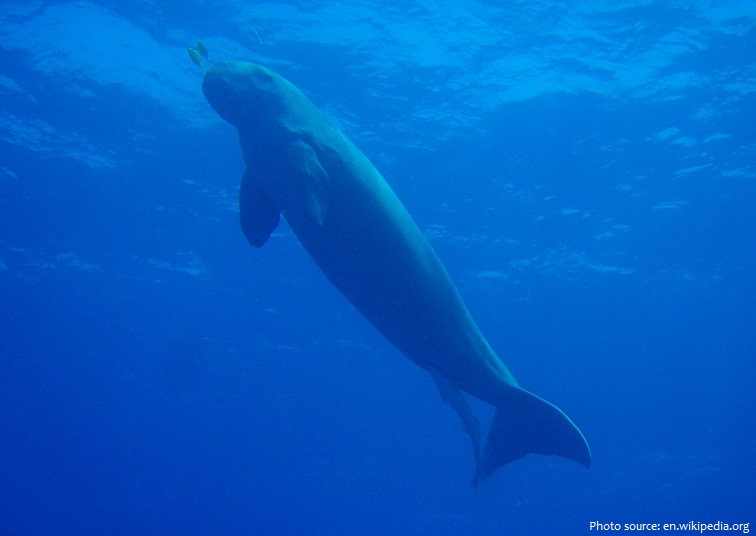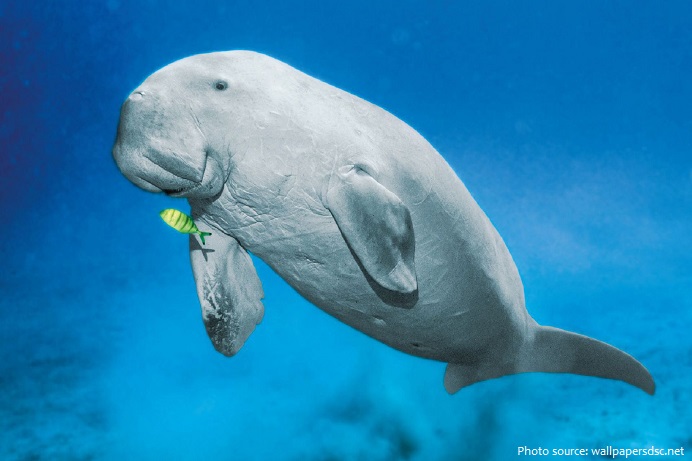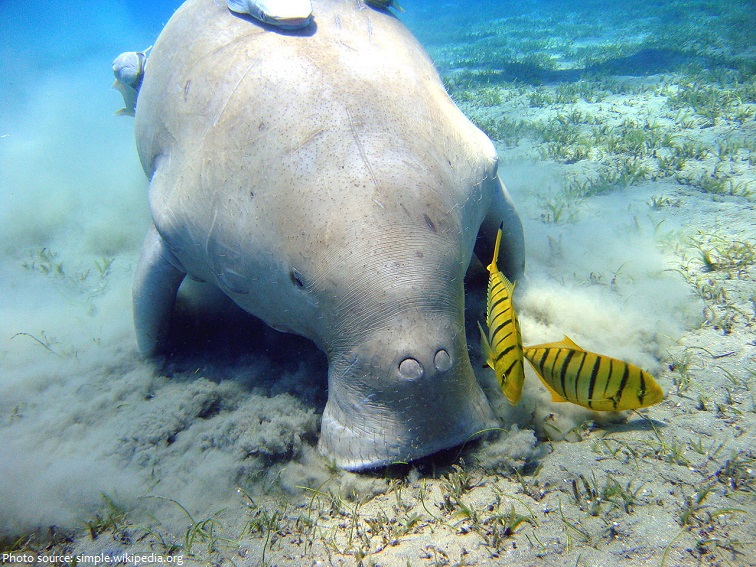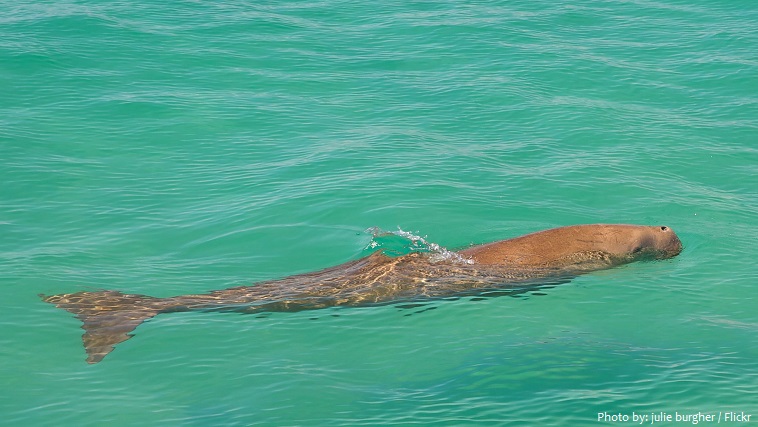The dugong is a large, fully aquatic, marine mammal.
It is one of four living species of the order Sirenia, which also includes three species of manatees.
Manatees and dugongs are affectionately dubbed “sea cows” because of their grass-eating tendencies and slow nature.
Dugongs are found in warm coastal waters from East Africa to Australia, including the Red Sea, Indian Ocean, and Pacific.
They generally inhabit shallow waters, remaining at depths of around 10 meters (33 feet), although they occasionally dive to depths of 40 meters (130 feet) to feed. These shallow areas are typically located in protected bays, wide mangrove channels and in sheltered areas of inshore islands.
With its long lifespan of 70 years or more, and slow rate of reproduction, the dugong is especially vulnerable to extinction.
Dugongs range in length from about 2.2 to 4 meters (7 to 13 feet) and weigh from 230 to 420 kilograms (500 to 925 pounds).
As with whales and dolphins, the dugong has a tapered body that ends in a deeply notched tail, or fluke. The forelimbs are rounded flippers lacking nails; there are no hind limbs or any discernible neck. The snout is broad and bristled. The thick bristles (vibrissae) function as sensory hairs and are important for detecting, discriminating, and manipulating food.
Not a very fast swimmer, they normally swims 10 kilometers (6 miles) per hour, but it can accelerate to around 22 kilometers (14 miles) per hour when needed.
Unlike other marine mammals, dugongs cannot hold their breath under water for very long. They stay submerged from 30 seconds to over six minutes, depending on their activity, and dives typically last 1-3 minutes.
Although they are social animals, they are usually solitary or found in pairs due to the inability of seagrass beds to support large populations. Gatherings of hundreds of dugongs sometimes happen, but they last only for a short time.
Communication is vital among individuals in this species. The two primary methods of communication this species uses are sound and vision. Much like dolphins, dugongs use chirps, whistles, barks and other sounds that echo underwater in order to communicate.
The dugong is the only strictly herbivorous marine mammal. Dugongs graze on sea grasses and aquatic plants. They need to eat large amounts of their food.
As in most herbivores, the dugong’s brain is very small compared to its body size, likely because it does not have to develop complex hunting strategies to capture prey.
Despite the longevity of the dugong, which may live for 70 years or more, females give birth only a few times during their life, and invest considerable parental care in their young. One young is born after a gestation period of 12 to 14 months and will continue to suckle from the mother for about 18 months. They may remain with the female for a number of years. A calf will only leave its mother once it has matured.
Dugongs have very few natural predators. Their massive size, tough skin, dense bone structure, and rapidly clotting blood may aid defenses. Sharks, crocodiles, and killer whales, however, feed on juvenile dugongs.
The dugong has been hunted for thousands of years for its meat and oil. Traditional hunting still has great cultural significance in several countries in its modern range, particularly northern Australia and the Pacific Islands. The dugong’s current distribution is fragmented, and many populations are believed to be close to extinction.
The IUCN lists the dugong as a species vulnerable to extinction, while the Convention on International Trade in Endangered Species limits or bans the trade of derived products.
Despite being legally protected in many countries, the main causes of population decline remain anthropogenic (chiefly of environmental pollution and pollutants) and include fishing-related fatalities, habitat degradation and hunting.
Mermaid sightings by sailors, when they weren’t made up, were most likely dugongs, manatees, or Steller’s sea cows (which became extinct by the 1760s due to over-hunting).





